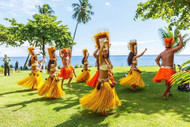Exploring Polynesian Culture: Food, Music, History & More
Posted by Maris on 24th Jul 2023
The Polynesian Triangle of the Pacific is synonymous with idyllic islands that offer swaying palms, exceptional places to scuba dive, and fascinating indigenous cultures.
The major islands that make up the rough boundaries of Polynesia include Hawaii in the north, New Zealand in the west, and Easter Island to the east.
Countless smaller islands are scattered between them, many of which are among the most isolated in the world.
The native peoples of these islands, known as Polynesians, number more than 2 million closely related people, including indigenous groups such as Hawaiians, Māori, Tongans, Rapa Nui, Samoans, and Tahitians.
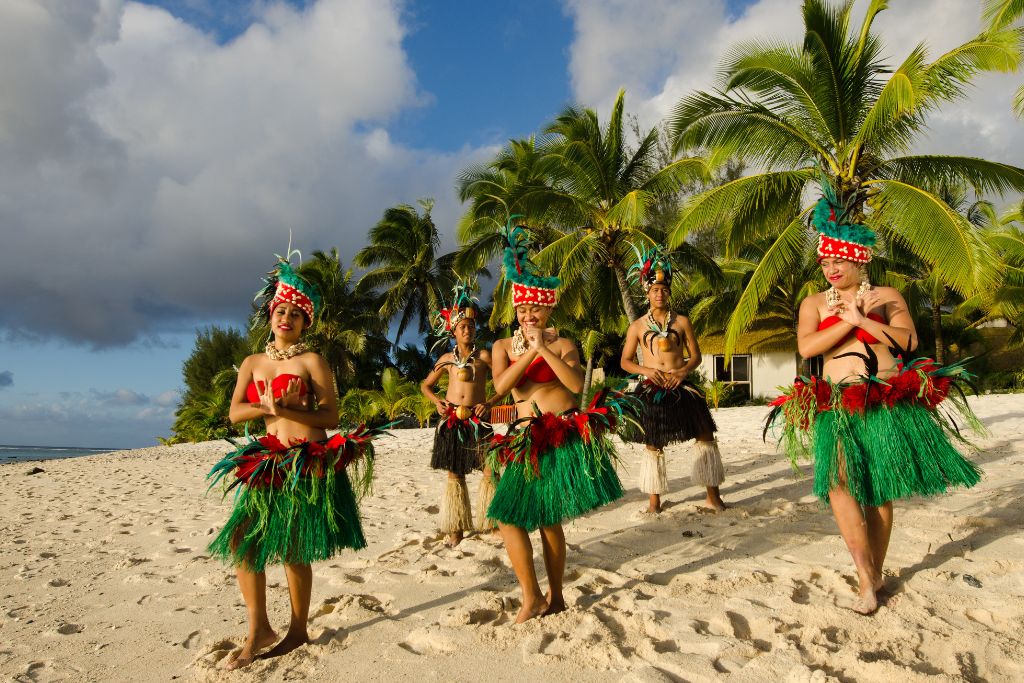
These groups can all trace their ancestral origins back to the islands of Southeast Asia.
They continue to share similarities in terms of their respective Polynesian cultures and beliefs, despite being separated by hundreds or even thousands of miles.
Yet each island (or archipelago) also offers its unique history and a distinct personality.
These seafaring peoples used their exceptional navigation skills to explore nearly every island within the Polynesian Triangle.
Exploring Polynesia allows you to experience the giant carved Moai heads of Easter Island and set foot upon the Marquesas Islands, which were once visited by legends like Herman Melville and Thor Heyerdahl.
Modern-day adventurers can hike through the untamed, yet beautiful wilderness of New Zealand and learn how to do the hula in Hawaii.
Let’s explore the captivating Polynesian culture you can experience on an expedition to the South Pacific, touching on topics such as local food, music, religion, and the different groups of people you’ll meet along the way.
POLYNESIAN ART
POLYNESIAN TATTOO ART
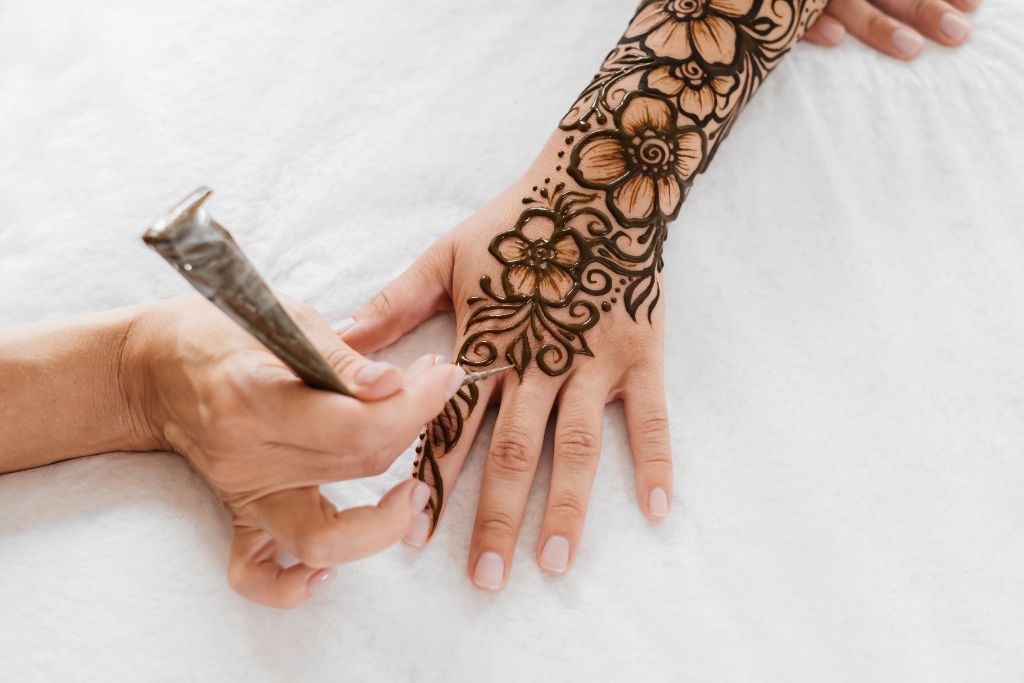
Early Polynesian culture’s lack of written language led the people of the islands to express themselves by tattooing motifs on their bodies.
Tattoos played a crucial role in both social and cultural aspects of their societies, with the majority of early Polynesians proudly displaying body art.
The word “tattoo” actually comes from Polynesia, and both the word and the art form were brought back to Europe after the 18th century Polynesian voyages of Captain James Cook.
Related Posts:
- Discover The Meaning And Importance Of Polynesian Tattoos
- Interesting Meanings of Hawaiian Tattoos You Probably Don’t Know
- Explore The Meaning of Hammerhead Shark Tattoo in Polynesian Culture
Polynesians often display extensive tattooing on their arms, torso, and legs.
The predominantly black designs often form large arm bands (or “sleeves”) and feature geometrical patterns and motifs that are often based on natural elements such as earth, fire, wind, and water.
For Polynesians, tattoos were not simply used as body ornamentation, but symbolized their genealogy and social hierarchy.
Both men and women wore them, and obtaining tattoos was often a sign of reaching sexual maturity.
Although the art of tattooing continues to be quite an uncomfortable process, early Polynesians endured extreme pain.
Wooden mallets tipped with bone (and possibly flakes of obsidian) were the tools of the trade for crafting tattoos.
Tattooing sessions would last hours each day, and the process of fully tattooing an individual would sometimes take months.
The body could take up to a year to heal from tattooing, with salt water used to prevent infection.
A celebration was traditionally held once an individual had completed their healing process.
Don’t miss the Polynesian Tattoo Collection of Polynesian Print.

HAWAIIAN QUILTS

Hawaiians are known for their distinctive quilting style, which often features floral designs that are crafted in a symmetrical manner. Before the arrival of Europeans, bedding material and garments were crafted from tree bark, and was known as kapa moe.
The designs used in today’s Hawaiian quilts were originally dye-stamped into the soft kapa moe.
This process changed after imported fabrics were introduced to the islands during the 19th century.
The Hawaiians kept their traditional designs, but began quilting instead. The colorful botanical designs are often sewn onto white backgrounds.
An exceptional example of Hawaiian quilting is at Honolulu’s Iolani Palace.
This is where Queen Liliuokalani– the last sovereign monarch of Hawaii– crafted a grand quilt after she was forced to abdicate her throne and later imprisoned within the palace.
A few dedicated locals continue to keep the tradition alive, offering up Hawaiian quilting classes at the palace.
It is considered taboo for anyone but the quilter to sit on the quilt while it is being made, and it is tradition for the quilt maker to sleep with a quilt for one night before giving it away.
Each quilt is meant to be unique, and it’s often frowned upon to reproduce another quilter’s design.
POLYNESIAN ROCK AND WOOD CARVINGS
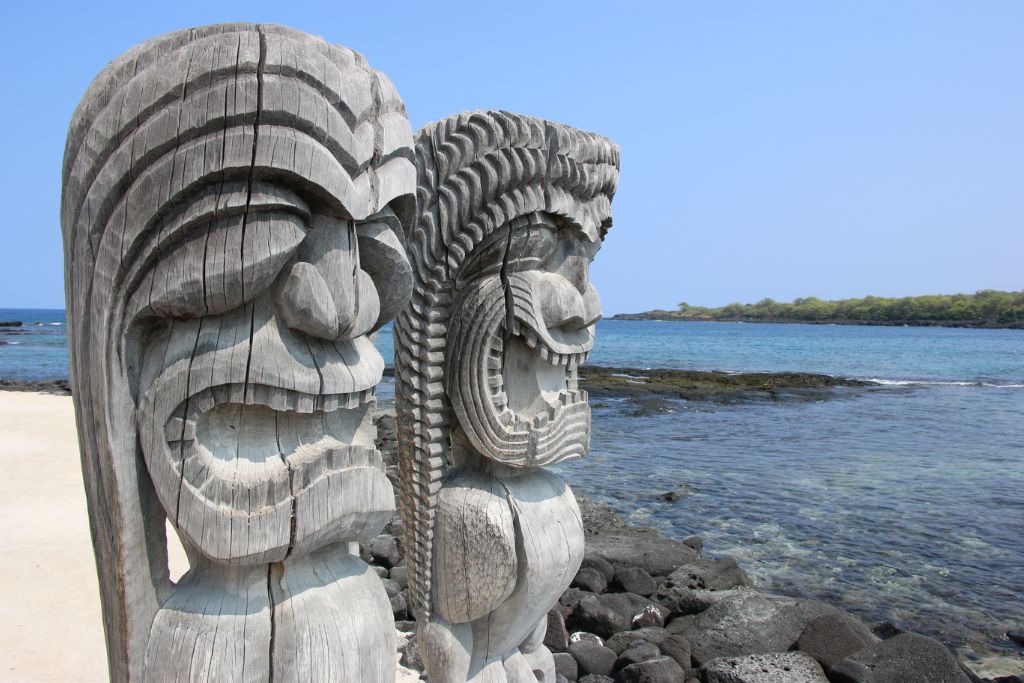
Some of Polynesia’s most impressive rock carvings can be found on Easter Island.
Here, you can see monolithic human figures, called Moai, which were carved over 500 years ago by the indigenous Rapa Nui people.
Hundreds of these stone heads are scattered around the island, having been crafted to please the gods they worshipped.
Many of the statues weigh well over 10 tons, and took a lot of manpower and skill to be carved and moved to their final positions on the island.
Also found on the island are petroglyphs that were placed on basalt boulders.
One of the most notable petroglyph designs can be found at the Orongo site, which features the island’s famous Birdman.
This image relates to the historic annual competition in which men would attempt to retrieve the first tern egg of the season from a nearby smaller island.
The Māori of New Zealand were more skilled in wood carving. They’re notable for crafting beautiful wooden carved masks, weapons, and canoes.
Wood working tools were often crafted from greenstone, as were weapons such as war clubs (known as patus).
Carvings were held sacred in Māori culture, with only men being allowed to carve and women not being allowed nearby while the work was being crafted.
POLYNESIAN FOOD
NEW ZEALAND FOOD
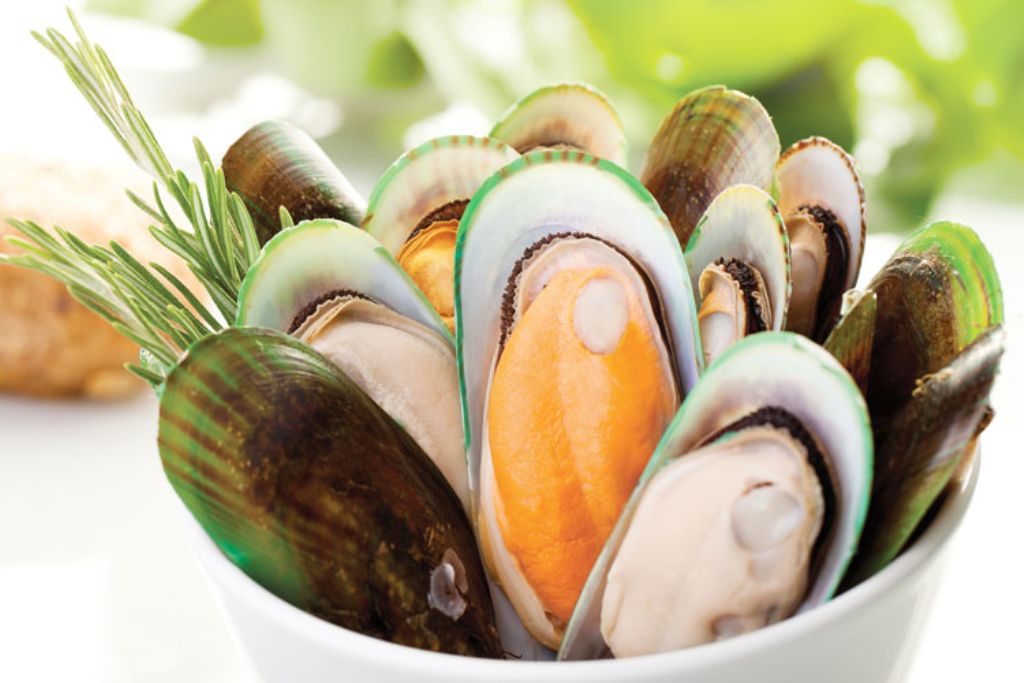
Considering that the nation boasts nearly 9,000 miles of coastline, it’s no surprise that seafood features heavily on menus throughout New Zealand.
Fresh fish and oysters are regularly eaten, as are more exotic sea creatures like kina (a type of sea urchin) and pāua (abalone).
One traditional Māori food and way of cooking is known as Māori hāngī, which involves slow-cooking chicken, pork, and lamb in an underground oven using fire-heated rocks.
The delicious meat is often served with kūmara, a type of sweet potato brought to New Zealand by early Māori settlers.
Of course one of the nation’s biggest exports is lamb chops, which you will commonly find in most restaurants throughout the islands.
New Zealand also produces exceptional sauvignon blanc to wash down your meals and a range of delightful desserts.
Try honeycomb toffee ice cream (which is known locally as hokey pokey), small orange-flavored chocolate balls called jaffas, and the legendary Pavlova (a meringue topped with fruit and cream).
The dessert is said to have been invented in New Zealand during the 1920s, and was named in honor of the Russian ballerina Anna Pavlova after her visit to the nation.
HAWAIIAN FOOD
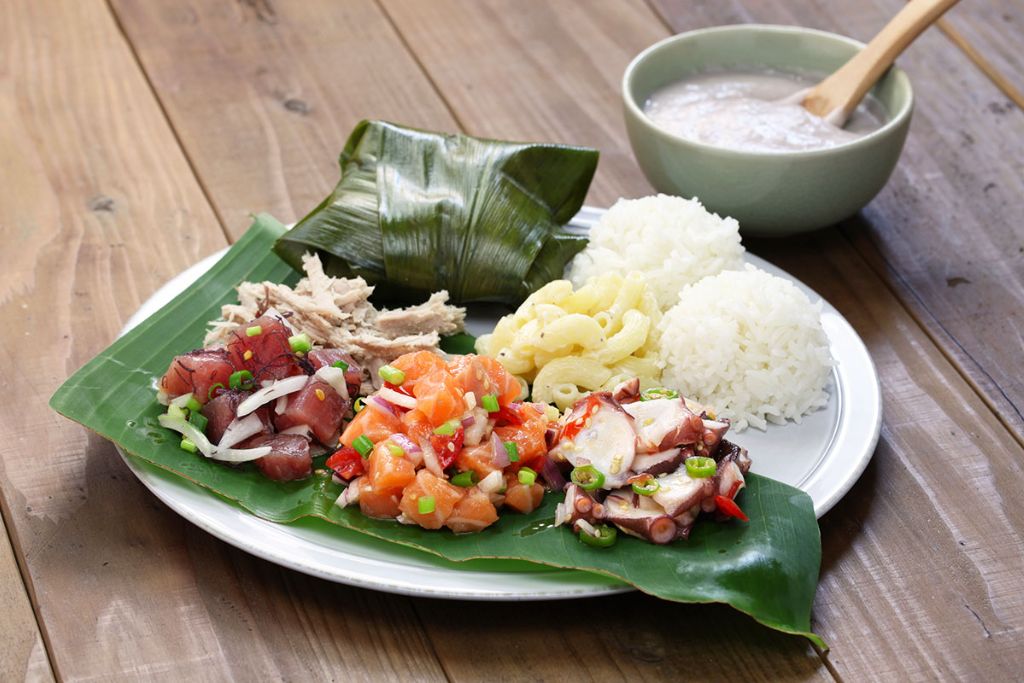
One of Hawaii’s most popular food staples are poke bowls, which consists of diced raw fish (usually skipkjack tuna, yellowfin tuna, or salmon).
It is often served with poke seasonings and green onion, but may also be presented with pineapple, cucumber, avocado, edamame, and over rice or lettuce.
Hawaiians also consume the traditional food poi, a starchy paste made from taro root.
The taro leaves are used to make laulau, which sees the leaves wrapped around fresh pork and then cooked in an underground oven.
For dessert, koelepalau is a traditional coconut pudding made with purple sweet potato.
You will also find a lot of small comfort food eateries (and even gas stations) selling Spam. Hawaiians began consuming cans of Spam during and after WWII.
The islanders consume nearly six millions cans of SPAM each year, and you can easily pick up Spam sandwiches, Spam and eggs, or Spam musubi (a.k.a. Spam sushi) at many locations.
TAHITIAN FOOD
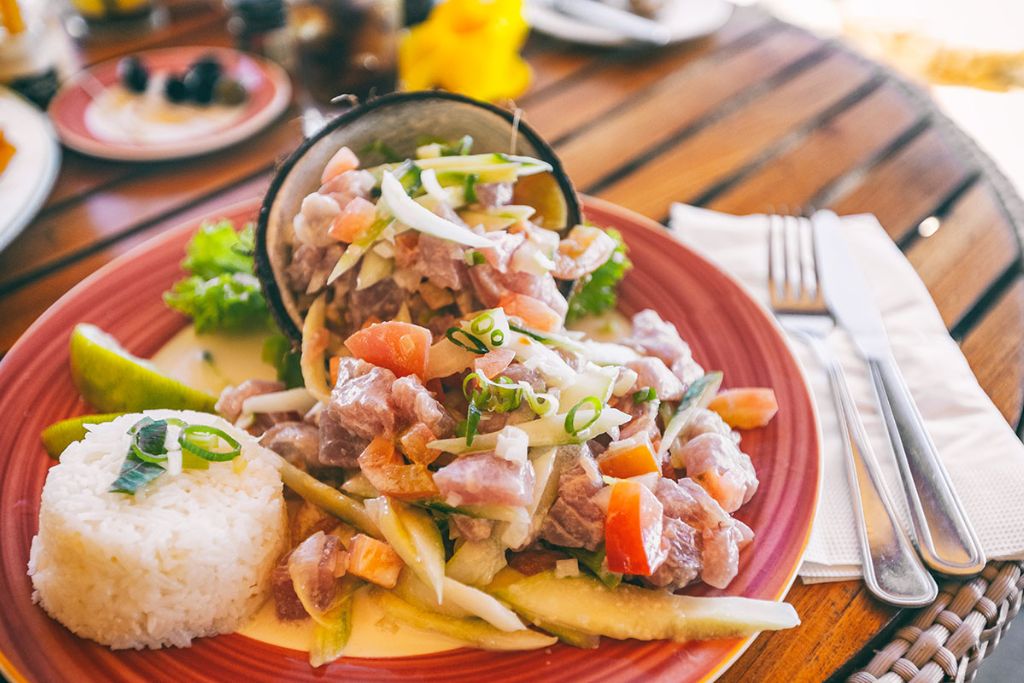
Not surprisingly, fresh seafood also plays a major role in the diets of Tahitians. Commonly eaten fish include mahi-mahi, tuna, grouper, and parrotfish.
The national dish of Tahiti is called poisson cru, a ceviche-like dish that blends raw runa, lime juice, and coconut milk.
You will also commonly find feasts of pig, lobster, or chicken being cooked in banana leaves over a pit carved out in the ground.
The Islands of Tahiti, or French Polynesia, also produce fresh pineapples, bananas, and vanilla.
And of course Tahitian coconuts are used for making coconut oil, coconut milk, and coconut rice.
SAMOAN FOOD
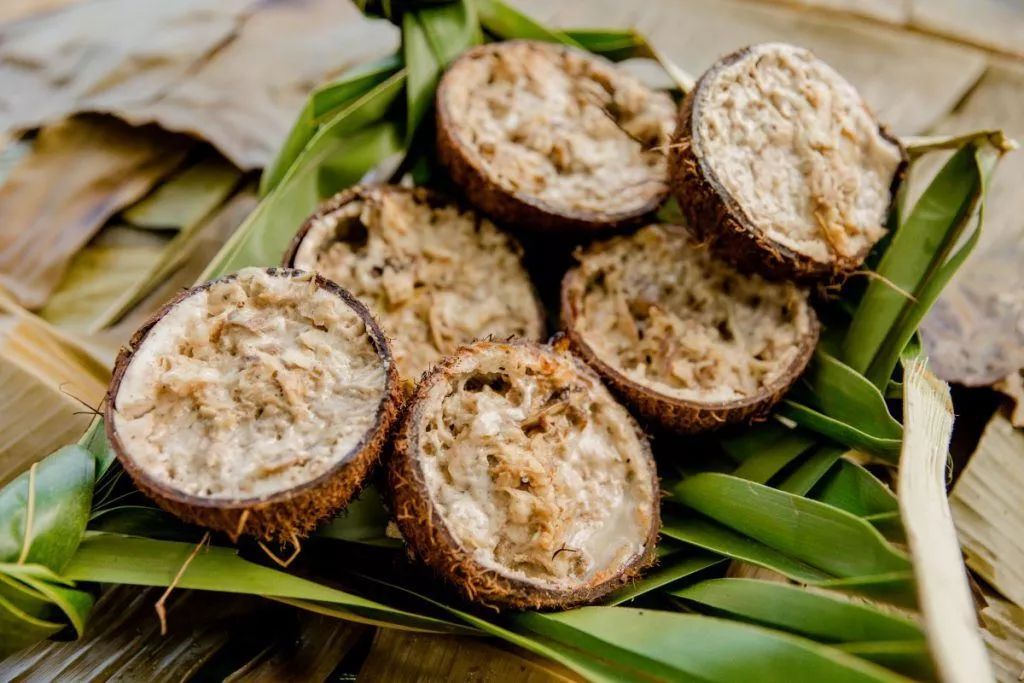
Coconuts are used for many popular Samoan dishes as well. One such dish is palusami, which sees a mixture of coconut milk and onions baked within taro leaves and banana leaves.
Fijians sometimes add corned beef to the dish, while Hawaiians may add chicken or fresh fish.
Samoans also use coconut milk to make pani popo bread rolls as well as fa’apapa, a sweet coconut bread.
They may sometimes add a sweet coconut caramel sauce to give the bread even more delectable flavor.
Other Samoan delights include pineapple and custard treats, known as half moon pineapple pies, as well as sweet banana fritters.
The British colonial influence has also seen sausage and gravy widely consumed throughout Samoa.
POLYNESIAN PEOPLE
MĀORI PEOPLE
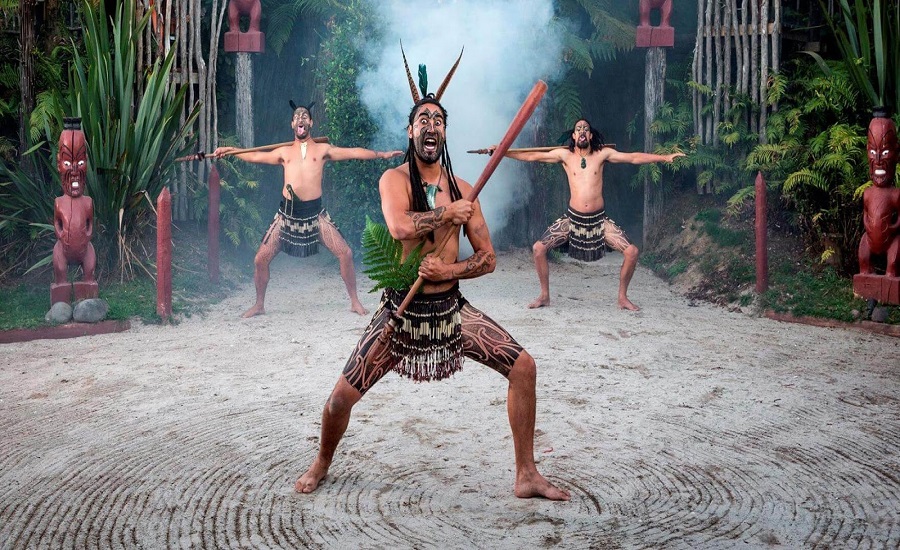
New Zealand’s indigenous Polynesian people are referred to as Māori.
They make up roughly 15% of New Zealand’s population, and are said to have first migrated to the islands between 1250 AD and 1300 AD.
They originally had no written language, and therefore became incredible storytellers as they passed down their history orally.
Family, or whānau, is extremely important in Māori culture and often extends beyond just blood relatives.
The marae acts as a communal and sacred place within each community, and a pōwhiri welcoming ceremony is often performed to welcome guests to a marae.
The traditional Māori greeting involves pressing one another’s noses and foreheads together.
RAPA NUI PEOPLE

The inhabitants of Easter Island, known as Rapa Nui, are the easternmost Polynesian peoples.
This Polynesian culture is known for producing the iconic stone Moai sculptures, and 60% of the current island’s population are descendants of the original Rapa Nui people.
The Rapa Nui saw their highest population levels during the 16th and 17th centuries.
But the continued deforestation of their island, along with the arrival of Europeans and disease, saw their numbers decimated to around a few hundred by the late 19th century
Annexed by Chile in the late 19th century, the Rapa Nui people now speak a combination of their traditional language and Spanish.
SAMOAN PEOPLE

Though politically and geographically divided between Samoa and American Samoa, Samoans share a common culture and language.
Over 90% of the people living on Samoa are considered ethnically Samoan.
Samoa was one of the first places in the Pacific region to be reached by early Polynesian migrants that set sail from Southeast Asia, and therefore offers one of Polynesia’s oldest cultures.
Samoans are devout Christians; most speak Samoan, one of the oldest Polynesian dialects.
Samoans live by Fa’a Samoa, which refers to their sociopolitical and traditional way of life.
Society is structured into extended families, which are led by a chief known as a matai.
There are around 18,000 matai in Samoa, and they are incorporated into several hundred different villages.
Most Samoans live rurally, choosing to reside in small coastal villages. However, some choose to temporarily set themselves up in the cities to earn money for their families and communities.
NATIVE HAWAIIAN PEOPLE

Nearly half a million people consider themselves native Hawaiians, the Aboriginal Polynesian people of the Hawaiian Islands.
The people of Hawaii were unified under the Kingdom of Hawaii by its founder and premier ruler, Kamehameha I.
The islands existed under a monarchy until the United States overthrew it.
The indigenous people of Hawaii exhibit a diverse range of customs, some of which are traditional in nature and others which the U.S. and Asia introduced.
One well-known tradition is the use of flower leis, which are used to welcome visitors. Women will often wear a plumeria or hibiscus flower on their right ear when single, and on their left ear when they have a partner.
Greetings generally involve a kiss on the cheek. A child’s first birthday is a big deal in Hawaii, celebrated with a giant luau.
This is because it was once rather common for newborns not to live to see their first birthday, and therefore it was a huge relief when they did.
POLYNESIAN MUSIC AND DANCE
NEW ZEALAND’S HAKA

One of the most famous Polynesian ceremonial dances is the haka, which is performed by New Zealand’s Māori culture.
This intimidating dance is often thought of as a preparation for battle, and can commonly be seen being performed before sporting events.
New Zealand’s national rugby team, the All Blacks, are the most notable group to perform the haka before their matches.
The dance is also used during ceremonies to welcome guests, at weddings, and to honor the death of loved ones.
The dance features foot-stomping, tongue-wagging movements, body-slapping, and chants that relate to Māori culture and history.
HAWAII’S HULA AND UKULELE

Hawaii not only offers us some of the most noteworthy and accessible Polynesian islands, but the archipelago is also the birthplace of hula dancing and the iconic sounds of the ukulele.
More than just a dance, the hula has historically been used to tell stories and to pass on Hawaiian history to new generations.
The more ancient style of hula is known as hula kahiko, which is often accompanied by chants and drums and is generally considered more spiritual.
The more modern hula auana features instruments like the ukulele and the steel guitar, both of which originated on the Hawaiian Islands during the 19th century.
One of the finest makers of ukuleles is Kamaka Hawaii, which created the first pineapple ukulele.
This type of ukulele may not be crafted from an actual pineapple. but it does feature a pineapple-like shape (unlike the figure 8 shape of traditional ukuleles).
CONCH SHELL TRUMPETS

Various different cultures around the world created conch shell trumpets. But they continue to have a strong presence in Polynesia, where triton shells are often used instead of conch shells.
They were used extensively in Fiji and can still be heard during cultural performances that are geared towards tourists.
The trumpets may have historically been used more often as signaling tools than as musical instruments, since the sound they emit can carry long distances.
They were believed to be used for ceremonial purposes, such as when a chief passed away.
Finger holes were often cut into the shells, allowing the player to vary the trumpet’s pitch.
Evidence of early shell trumpets have been found throughout Polynesia, but are completely absent from nearby Australia.
POLYNESIAN RELIGION
As Polynesians migrated throughout the Pacific islands from Southeast Asia, they brought with them their beliefs in various deities.
These Polynesian gods and goddesses, such as the world-renowned Pele, goddess of fire and volcanoes, were often strongly tied to nature.
They also believed in demigods, one of the most famous being Māui.
Māui was thought to be a clever trickster who brought fire to the people, using his fish hook to slow down the sun and lift islands up from beneath the sea.
The Polynesians also believed that living things (as well as some inanimate objects) contained a spiritual energy known as mana.
However, this power was not always good, and individual people, animals, and objects were often seen as evil.
RELIGIOUS TABOOS

The taboo system of religious prohibitions was extremely prevalent in early Polynesian society.
The actual word “taboo” is thought to originally derive from the Tongan or Fijian language.
These prohibitions– or tapus, as they were known locally– varied between the different island groups, but were often imposed by Polynesian chiefs or kings.
Many taboos were directed at women: It was taboo for women to eat many types of food that men were allowed to eat, and women who had just given birth were considered to be taboo for a set time.
Taboos were often temporary, but could end up lasting years. Things we now see as being taboo, such as cannibalism, were accepted and even honored by some early Polynesians.
But it was taboo to bring water inside huts, have sick people around the village, allow ordinary people to enter temples, touch dead chiefs, etc.
The punishment for not adhering to these taboos was often death.
CHRISTIANITY IN POLYNESIA
After the arrival of the Europeans, many Polynesians began adopting the Christian religion.
Today, the Polynesian islands practice Christianity, including Catholicism and Protestantism.
Temples once held sacred were later destroyed in order to make way for Christian churches.
Many Polynesian cultures completely abandoned their former beliefs in favor of Christianity, while others have learned to harmoniously weave their ancient beliefs with the religion brought over by 18th century missionaries.
Sadly, many of the ancient Polynesian religious sculptures were deemed as harmful idols and were confiscated by missionaries and brought back to Europe to show that they had converted various Polynesian cultures to Christianity.
Many of the remaining religious artifacts found their way into international museums at the hands of early explorers and archaeologists.
POLYNESIA’S SEAFARING HISTORY
OUTRIGGER CANOES
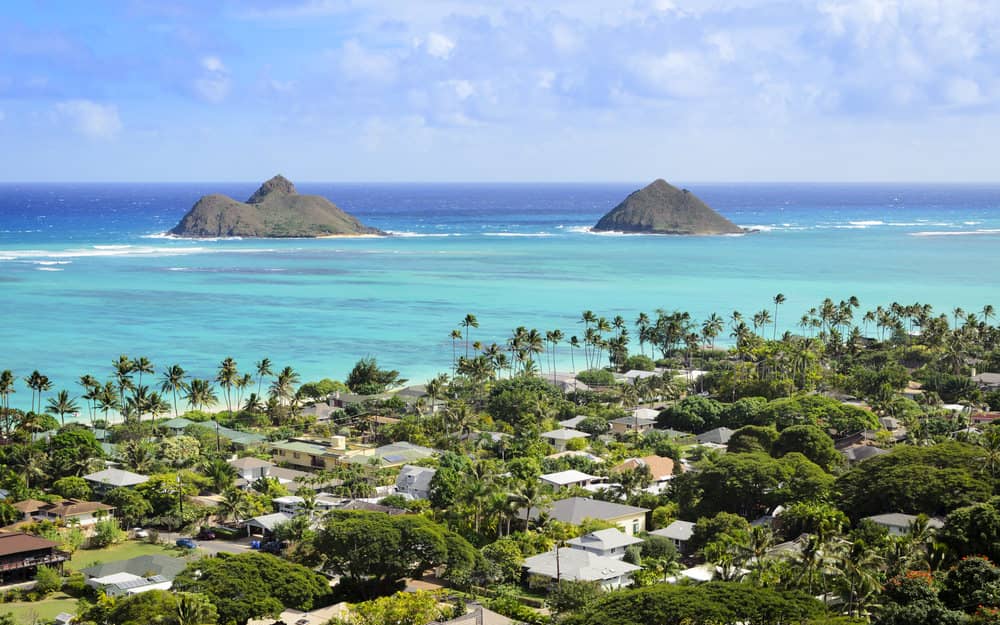
Polynesians crafted some of the world’s first sea-going vessels, which we now refer to as outrigger canoes.
The deceptively simple design features a main hull with lateral support floats (outriggers) fastened to its sides for balancing support.
These early canoes were capable of long ocean voyages, thus allowing Polynesians to spread to many different islands throughout the Pacific.
Some of these outrigger canoes were capable of carrying dozens of people, along with enough plants, animals, food, and water to sustain them all for their arduous oceanic journeys.
Every person on the outrigger had a duty. Fishermen needed to catch fish, women repaired sails (usually consisting of leaves sewn together), and others would bail out the main hull or help steer the canoe.
Trees for the canoes were carefully selected to ensure they would hold up to sea conditions, with hulls often carved from a single trunk.
CELESTIAL NAVIGATION

Polynesians were remarkable navigators, especially when you consider the fact that they had no modern instruments, such as compasses or GPS.
Instead, they learned to navigate the oceans using the sun and stars and had an advanced understanding of currents and wave patterns.
They learned to tell east and west direction by watching the sun rise and set each day.
They would use constellations in the sky to navigate at night, taking into consideration that those constellations changed depending on their latitude.
In addition to using the sky for navigation, the Polynesian also learned the subtle art of discerning direction based on seasonal swells that would affect their outrigger canoes.
SPREADING ACROSS THE PACIFIC

It is believed that the ancient Polynesians originally set sail from Southeast Asia somewhere between 3000 BC to 1000BC.
They may have reached places like Samoa, Tonga, and Fiji as early as 1200 BC, and then proceeded further to reach the Cook Islands, the Marquesas, Hawaii, New Zealand, and Easter Island.
There are theories that Easter Island may have been discovered by early South American peoples, as proposed by explorer Thor Heyerdahl due to evidence of South American produce and artifacts being found there.
But this may, in fact, have been due to the Polynesians making their way across the Pacific to reach South America, and then later returning to Easter Island.
In addition to their incredible knowledge of the sea, Polynesian migration may have been assisted by periods of favorable winds and currents that occurred between 800 AD and 1300 AD.
There were times during this era when they traveled considerable distances while conditions were favorable, and other times where their sea travel nearly ceased entirely. –by Megan Jerrard courtesy of Green Travel Media

